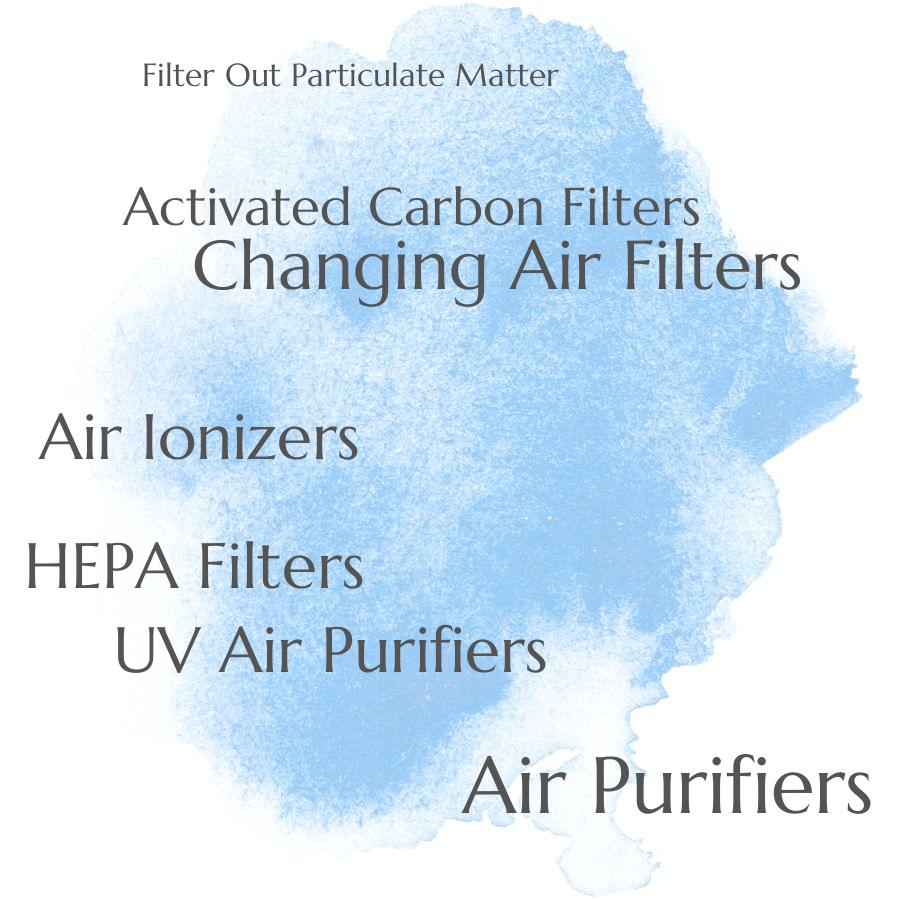The best ways to filter out particulate matter from indoor air include using air purifiers with high-efficiency particulate air (HEPA) filters, vacuuming regularly, and improving ventilation.
Particulate matter in indoor air can cause a variety of health problems, from respiratory irritation to long-term illnesses. Fortunately, there are several ways to filter out particulate matter from your home or office.
In this blog post, we’ll discuss the best methods for filtering out particulate matter from indoor air and how you can use them to improve the quality of your indoor environment.
Air Purifiers

They work by drawing in air, trapping particles such as dust, pollen, and smoke in a filter or other type of media, and then releasing the filtered air back into the room. Air purifiers come in many different sizes and types depending on the size of the space they are intended for.
Some models use HEPA filters which can capture up to 99.97% of airborne particles down to 0.3 microns in size; others may use activated carbon filters which can absorb odors and gases; while still others may use ultraviolet light to kill bacteria and viruses present in the air. By using an appropriate combination of these technologies, an effective air purifier can help reduce levels of particulate matter indoors significantly.
HEPA Filters
HEPA stands for High Efficiency Particulate Air, and these filters are designed to capture particles as small as 0.3 microns in size. This includes dust, pollen, pet dander, smoke particles, and other airborne contaminants that can cause health problems if left unchecked.
HEPA filters work by forcing air through a fine mesh material that traps the particles before they can enter the room or building. The trapped particles are then collected in a collection bin or bag which needs to be emptied regularly for optimal performance.
HEPA filters provide an effective way to reduce indoor air pollution and improve overall air quality in homes and businesses alike.
Activated Carbon Filters
These filters use activated carbon, a form of charcoal that has been treated with oxygen to open up millions of tiny pores between its atoms. This creates a large surface area which is ideal for trapping and absorbing pollutants such as dust, smoke, pollen, and other airborne particles.
The activated carbon works by adsorbing the particles onto its surface; this means that they stick to it like glue instead of passing through it. As more particles are trapped on the filter’s surface, its effectiveness increases over time until it needs to be replaced or cleaned off.
Activated carbon filters can be used in air purifiers or ventilation systems and are an effective way to reduce levels of particulate matter in indoor air.
UV Air Purifiers
These systems work by passing the indoor air through a chamber containing UV lamps, which emit short-wavelength ultraviolet radiation. This radiation breaks down the molecular structure of airborne particles, such as dust, pollen, and bacteria, rendering them harmless and unable to cause any health problems.
The broken-down particles are then collected in a filter or discharged outside the building. UV air purifiers can be used in both residential and commercial settings to reduce levels of particulate matter in the indoor environment.
They are especially effective at removing allergens like pet dander and mold spores from the air.
Air Ionizers
They work by releasing negative ions into the air, which attach themselves to airborne particles such as dust, pollen, and smoke. The charged particles become heavier and fall out of the air, thus reducing the amount of particulates in the room.
Air ionizers can be used in combination with other filtration systems for maximum efficiency. They are relatively inexpensive and easy to maintain, making them a popular choice for improving indoor air quality.
Regularly Changing Air Filters
Air filters are designed to capture airborne particles such as dust, pollen, and other allergens that can cause health problems. By regularly replacing your air filter, you can ensure that your home’s air quality remains clean and healthy.
The frequency of replacement depends on the type of filter used and the amount of pollutants in the environment; however, most experts recommend changing them every three months or so. When selecting an air filter for your home, it is important to choose one with a high MERV rating (Minimum Efficiency Reporting Value) which indicates how effective it will be at trapping small particles like dust mites and pet dander.
Using an electrostatic or HEPA (High-Efficiency Particulate Air) filter can help reduce even more pollutants from entering your home’s indoor air supply.
Ventilation Systems
Ventilation systems work by introducing fresh outdoor air into a building or room, while simultaneously exhausting stale indoor air. This process helps to reduce the concentration of airborne particles and pollutants in the indoor environment, improving overall air quality.
The most effective ventilation systems use high-efficiency filters that can capture small particles such as dust, pollen, smoke, and other allergens before they enter the building or room. Some ventilation systems also include ultraviolet light technology which can help to kill bacteria and viruses in the incoming airflow.
By using these types of advanced filtration technologies in combination with regular maintenance and cleaning procedures, it is possible to significantly reduce levels of particulate matter in an indoor environment.
Read Also
- Comparing Different Types of Air Filtration Systems: HEPA, Activated Carbon, and UV-C
- How to Reduce the Amount of Pollen in Your Home’s Air
- Natural Ways to Remove Odors From Indoor Air
- Are Air Purifiers Effective At Improving Home Air Quality?
- How to Reduce the Amount of Formaldehyde in Your Home’s Air